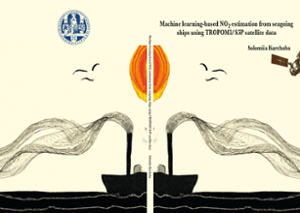Dissertation
Machine learning-based NO2 estimation from seagoing ships using TROPOMI/S5P satellite data
The marine shipping industry is one of the strongest emitters of nitrogen oxides (NOx), a pollutant detrimental to ecology and human health. Over the last 20 years, the pollution produced by power plants, the industry sector, and cars has been decreasing.
- Author
- S. Kurchaba
- Date
- 11 June 2024
- Links
- Thesis in Leiden Repository

In contrast, the pollution impact of maritime transport continues to increase. This generates a big societal pressure, resulting in regulations proposed by the International Maritime Organization (IMO). These regulations impose restrictions on emission levels from ships. While various methods are used to assess the emission from ships in ports and off-coastal areas, monitoring over the open sea has been infeasible. The game-changer is the TROPOMI instrument on board the Sentinel 5 Precursor Satellite – studies show that NO2 plumes from some individual seagoing ships can be distinguished on TROPOMI images. The objective of this thesis is to pave the way toward the application of the TROPOMI instrument for the monitoring of compliance of seagoing ships. This is achieved through the fusion of machine learning, feature engineering, and data integration. Each chapter builds upon the findings of its predecessor, as a whole, representing state-of-the-art knowledge in the application of TROPOMI data for the monitoring of NO2 emissions from individual seagoing ships.
